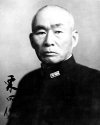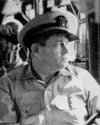THE BATTLE OFF SAMAR
Introduction:
This will document one of the most heroic, hard fought, and important naval engagements in World war II and in modern history.
Though not as impactful on the final outcome of the World War II as the Battle of Midway in June of 1942, and not as momentous as the Pearl Harbor attack of December 7, 19421, this battle pitted the largest surface fire task force to see action during the war against a much smaller opposing force, which was taken every bit as much by surprise as the Pearl Harbor defenders.
Situation:
The Battle off Samar, was at the end of the overall Battle of Leyte Gulf which itself a three task force attack (A Northern Force, a Center Force, and a Southern Force) by the Empirical Japanese Navy which had been carefully orchestrated to get at and destroy the huge American anchorage supporting the American invasion of Leyte. The plan called for the Northern Force act as a decoy and draw off the large United States Navy carrier Task Force under Admiral Bull Haley, which otherwise would decimate the Surface Task Forces that were to converge on the Anchorage.
The overall strategy was expertly carried out by the Japanese. The Southern force were detected and defeated in detail well before reaching the anchorage...but it effectively served as feint and decoy for the Center force under the command of Vice Admiral Takeo Kurita, who arrived on the scene early on Wednesday morning October 25, 1944.
Japanese Center Group under Vice Admiral Kurita:
Admiral Kurita carried out his orders very well. He had been attacked by many US aircraft the previous day as he crossed the Sibuyan Sea. In that attack, Yamato's sister ship, the Musashi had been sunk and one of his heavy cruisers badly damaged.
At first, Kurita had turned back to get out of range of the American planes...and ultimately when their attacks ended, he patiently waited, and then turned back towards Luzon in the evening. The Americans thought he had disengaged...they could not have been more wrong. As a result, he would arrive the next morning, October 25th, with his very large surface action group, still consisting of the following vessels:
Battleships:
HIJMS YAMATO
HIJMS KONGŌ
HIJMS NAGATO
HIJMS HARUNA
Heavy Cruisers:
HIJMS HAGURO
HIJMS KUMANO
HIJMS CHŌKAI
HIJMS SUZUYA
HIJMS TONE
HIJMS CHIKUMA
Light Cruisers:
HIJMS NOSHIRO
HIJMS YAHAGI
Destroyers:
HIJMS KISHINAMI
HIJMS ISOKAZE
HIJMS OKINAMI
HIJMS YUKIKAZE
HIJMS HAMANAMI
HIJMS NOWAKI
HIJMS HAYASHIMO
HIJMS AKISHIMO
HIJMS SHIMAKAZE
Introduction:
This will document one of the most heroic, hard fought, and important naval engagements in World war II and in modern history.
Though not as impactful on the final outcome of the World War II as the Battle of Midway in June of 1942, and not as momentous as the Pearl Harbor attack of December 7, 19421, this battle pitted the largest surface fire task force to see action during the war against a much smaller opposing force, which was taken every bit as much by surprise as the Pearl Harbor defenders.
Situation:
The Battle off Samar, was at the end of the overall Battle of Leyte Gulf which itself a three task force attack (A Northern Force, a Center Force, and a Southern Force) by the Empirical Japanese Navy which had been carefully orchestrated to get at and destroy the huge American anchorage supporting the American invasion of Leyte. The plan called for the Northern Force act as a decoy and draw off the large United States Navy carrier Task Force under Admiral Bull Haley, which otherwise would decimate the Surface Task Forces that were to converge on the Anchorage.
The overall strategy was expertly carried out by the Japanese. The Southern force were detected and defeated in detail well before reaching the anchorage...but it effectively served as feint and decoy for the Center force under the command of Vice Admiral Takeo Kurita, who arrived on the scene early on Wednesday morning October 25, 1944.
Japanese Center Group under Vice Admiral Kurita:
Admiral Kurita carried out his orders very well. He had been attacked by many US aircraft the previous day as he crossed the Sibuyan Sea. In that attack, Yamato's sister ship, the Musashi had been sunk and one of his heavy cruisers badly damaged.
At first, Kurita had turned back to get out of range of the American planes...and ultimately when their attacks ended, he patiently waited, and then turned back towards Luzon in the evening. The Americans thought he had disengaged...they could not have been more wrong. As a result, he would arrive the next morning, October 25th, with his very large surface action group, still consisting of the following vessels:
Battleships:
HIJMS YAMATO
HIJMS KONGŌ
HIJMS NAGATO
HIJMS HARUNA
Heavy Cruisers:
HIJMS HAGURO
HIJMS KUMANO
HIJMS CHŌKAI
HIJMS SUZUYA
HIJMS TONE
HIJMS CHIKUMA
Light Cruisers:
HIJMS NOSHIRO
HIJMS YAHAGI
Destroyers:
HIJMS KISHINAMI
HIJMS ISOKAZE
HIJMS OKINAMI
HIJMS YUKIKAZE
HIJMS HAMANAMI
HIJMS NOWAKI
HIJMS HAYASHIMO
HIJMS AKISHIMO
HIJMS SHIMAKAZE
Last edited:




























